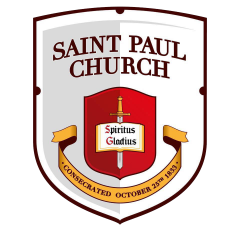
English: Icon of St. Barnabas (1921), Museum St. Barnabas Salamis (Cyprus). Deutsch: Ikone des Barnabas (Apostel), Ikonen-Museum St. Barnabas (1921), Salamis (Zypern). (Photo credit: Wikipedia)
Barnabas (Ancient Greek: Βαρναβᾶς), born Joseph, was an early Christian, one of the earliest Christian disciples in Jerusalem. According to Acts 4:36 Barnabas was a Cypriot Jew. Barnabas‘ story appears in the Acts of the Apostles, and Paul mentions him in some of his epistles. Although the date, place, and circumstances of his death are historically unverifiable, Christian tradition holds that Barnabas was martyred at Salamis, Cyprus, in 61 AD. Barnabas is usually identified as the cousin of Mark the Evangelist on the basis of Colossians 4. Barnabas appears mainly in Acts, a Christian history of the early Christian church. The prosperity of the church at Antioch led the apostles and brethren at Jerusalem to send Barnabas there to superintend the movement. Barnabas wished to take John Mark along, but Paul did not, as he had left them on the former journey (15:37-38).
According to Hippolytus of Rome, John Mark is not Mark the Cousin of Barnabas, and Barnabas did not dispute with Paul because of personal favor to a blood relative, but due to his character as his nickname Barnabas (“Son of Encouragement”) indicates. Church tradition developed outside of the canon of the New Testament describes the martyrdom of many saints, including the legend of the martyrdom of Barnabas.
According to the History of the Cyprus Church, in 478 Barnabas appeared in a dream to the Archbishop of Constantia (Salamis, Cyprus) Anthemios and revealed to him the place of his sepulchre beneath a carob-tree. The following day Anthemios found the tomb and inside it the remains of Barnabas with a manuscript of Matthew’s Gospel on his breast.
Clement of Alexandria (Stromata, ii, 20) also makes Barnabas one of the Seventy Disciples that are mentioned in the Gospel of Luke 10:1ff.
The Cypriot Church claimed Barnabas as its founder in order to rid itself of the supremacy of the Patriarch of Antioch, as did the Archbishop of Milan afterwards, to become more independent of Rome.


